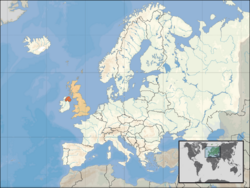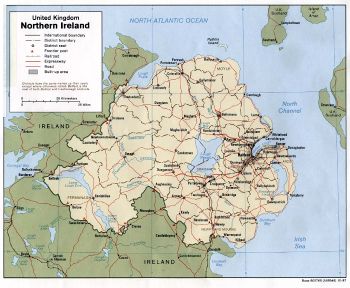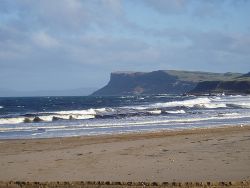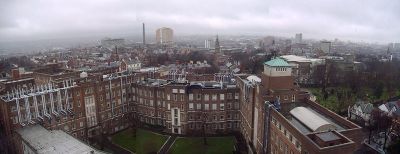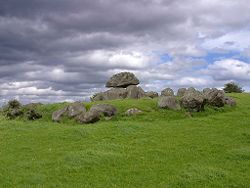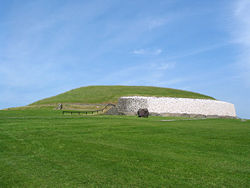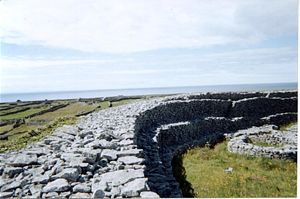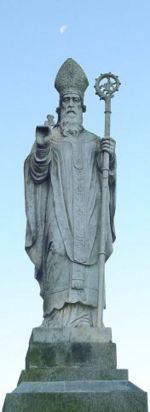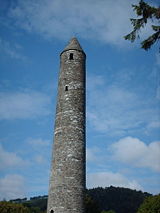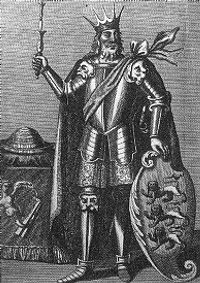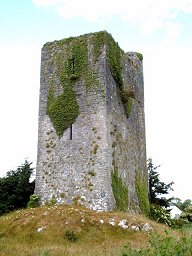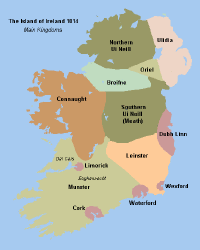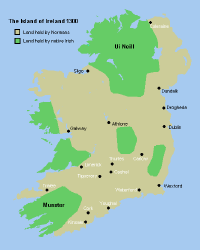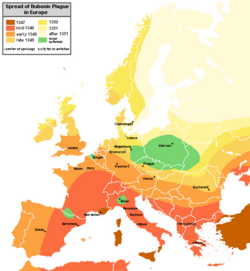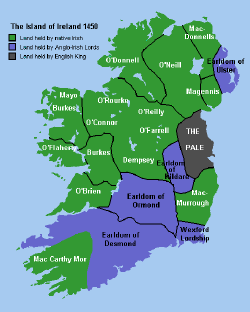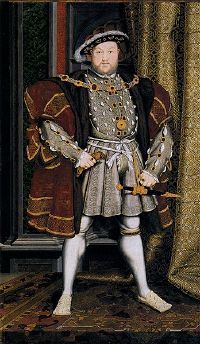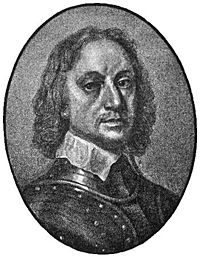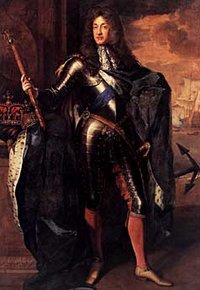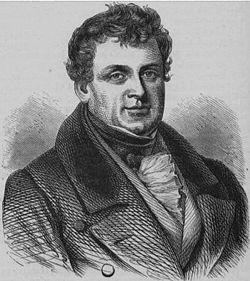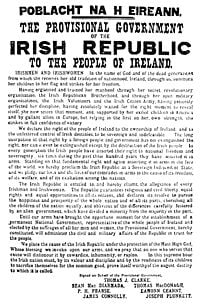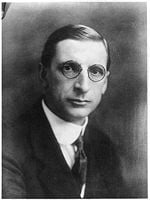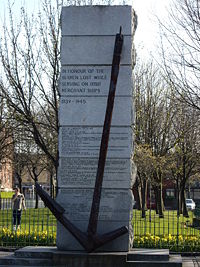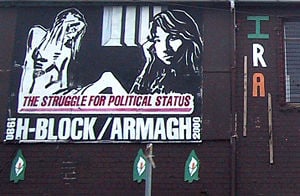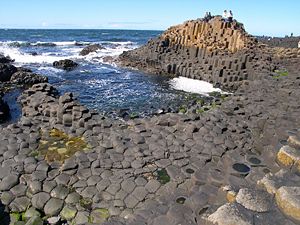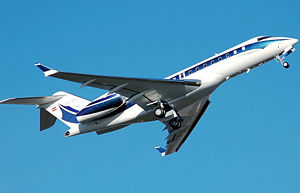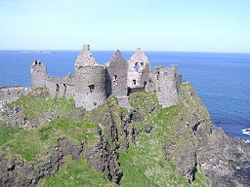Difference between revisions of "Northern Ireland" - New World Encyclopedia
Mike Butler (talk | contribs) |
Mike Butler (talk | contribs) |
||
| Line 428: | Line 428: | ||
Most of the population of Northern Ireland are at least nominally [[Christian]]. In the 2001 census, 53.1 percent of the Northern Irish population were Protestant, (Presbyterian, Church of Ireland, Methodist and other Protestant denominations), 43.8 percent of the population were Roman Catholic, 0.4 percent Other and 2.7 none none. | Most of the population of Northern Ireland are at least nominally [[Christian]]. In the 2001 census, 53.1 percent of the Northern Irish population were Protestant, (Presbyterian, Church of Ireland, Methodist and other Protestant denominations), 43.8 percent of the population were Roman Catholic, 0.4 percent Other and 2.7 none none. | ||
| − | Violent antagonism | + | Violent antagonism emerged between Catholics and Protestants. An influx of settlers from England and Scotland was not welcomed by the native Irish, since the newcomers were awarded the best parcels of land. At first, the minority Ulster Protestants could not dominate the Catholic majority, but after the victory of the Protestants supporting William of Orange at the Battle of the Boyne, they prevailed. |
The proportion of the population practising their religious beliefs has fallen dramatically in the last decades of the twentieth century, particularly among Catholics and adherents of mainstream Protestant denominations. This has not necessarily resulted in a weakening of communal feeling. | The proportion of the population practising their religious beliefs has fallen dramatically in the last decades of the twentieth century, particularly among Catholics and adherents of mainstream Protestant denominations. This has not necessarily resulted in a weakening of communal feeling. | ||
Revision as of 06:54, 12 September 2007
| Northern Ireland (English) Tuaisceart Éireann (Irish) Norlin Airlann1 (Ulster Scots) The Union Flag is the official flag used by the government to represent Northern Ireland. The former official flag, the Ulster Banner, continues to be used by groups (such as sports teams) representing the territory in an unofficial manner (see Northern Ireland flags issue).
| |
| Motto: Quis separabit? (Latin) "Who shall separate?" | |
| Anthem: "God Save the Queen" "Londonderry Air" (de facto) | |
|
Location of Northern Ireland (orange)
– on the European continent (camel white) – in the United Kingdom (camel) | |
| Capital | Belfast 54°35.456′N 5°50.4′W |
|---|---|
| Largest city | capital |
| Official languages | English (de facto), Irish and Ulster Scots2 |
| Government | Constitutional monarchy |
| - Queen | Queen Elizabeth II |
| - Prime Minister | Gordon Brown MP |
| - First Minister | Ian Paisley MLA |
| - Deputy First Minister | Martin McGuinness MLA |
| - Secretary of State | Shaun Woodward MP |
| Establishment | |
| - Government of Ireland Act | 1920 |
| Area | |
| - Total | 13,843 km² 5,345 sq mi |
| Population | |
| - 2004 estimate | 1,710,300 |
| - 2001 census | 1,685,267 |
| - Density | 122/km² 315/sq mi |
| GDP (PPP) | 2002 estimate |
| - Total | $33.2 billion |
| - Per capita | $19,603 |
| Currency | Pound sterling (GBP)
|
| Time zone | GMT (UTC+0) |
| - Summer (DST) | BST (UTC+1) |
| Internet TLD | .uk3 |
| Calling code | +44 |
Northern Ireland (Irish: Tuaisceart Éireann) is a part of the United Kingdom lying in the northeast of the island of Ireland.
Northern Ireland consists of six of the nine counties of the province of Ulster. The remainder of the island of Ireland is a sovereign state, the Republic of Ireland.
Northern Ireland has been for many years the site of a violent and bitter ethno-political conflict between those claiming to represent Nationalists, who are predominantly Catholic, and those claiming to represent Unionists, who are predominantly Protestant.
In general, Nationalists want Northern Ireland to be unified with the Republic of Ireland, and Unionists want it to remain part of the United Kingdom. Unionists are in the majority in Northern Ireland, though Nationalists represent a significant minority. In general, Protestants consider themselves British and Catholics see themselves as Irish but there are some who claim dual nationality.
The campaigns of violence have become known popularly as The Troubles. The majority of both sides of the community have had no direct involvement in the violent campaigns waged. Since the signing of the Belfast Agreement in 1998, many of the major paramilitary campaigns have either been on ceasefire or have declared their war to be over.
Geography
Northern Ireland covers 5459 square miles (14,139 square kilometers), about a sixth of the island's total area, or a little larger than the U.S. state of Maryland.
The largest island of Northern Ireland is Rathlin, off the Antrim coast. Strangford Lough is the largest inlet in the British Isles, covering 150 square kilometres.
Northern Ireland was covered by an ice sheet for most of the last ice age and on numerous previous occasions, the legacy of which can be seen in the extensive coverage of drumlins in Counties Fermanagh, Armagh, Antrim and particularly Down. The volcanic activity which created the Antrim Plateau also formed the eerily geometric pillars of the Giant's Causeway on the north Antrim coast. Also in north Antrim are the Carrick-a-Rede Rope Bridge, Mussenden Temple and the Glens of Antrim.
There are substantial uplands in the Sperrin Mountains (an extension of the Caledonian fold mountains) with extensive gold deposits, granite Mourne Mountains and basalt Antrim Plateau, as well as smaller ranges in South Armagh and along the Fermanagh–Tyrone border. None of the hills are especially high, with Slieve Donard in the dramatic Mournes reaching 2782 feet, (848 meters) Northern Ireland's highest point. Belfast's most prominent peak is Cave Hill.
The whole of Northern Ireland has a temperate maritime climate, rather wetter in the west than the east, although cloud cover is persistent across the region. The weather is unpredictable at all times of the year, and although the seasons are distinct, they are considerably less pronounced than in interior Europe or the eastern seaboard of North America. Average daytime maximums in Belfast are 43.7°F (6.5°C) in January and 63.5°F (17.5°C) in July. The damp climate and extensive deforestation in the sixteenth and seventeenth centuries resulted in much of the region being covered in rich green grassland.
The centrepiece of Northern Ireland's geography is Lough Neagh, at 151 square miles (392 square kilometers) the largest freshwater lake both on the island of Ireland and in the British Isles. A second extensive lake system is centred on Lower and Upper Lough Erne in Fermanagh.
The Lower and Upper River Bann, River Foyle and River Blackwater form extensive fertile lowlands, with excellent arable land also found in North and East Down, although much of the hill country is marginal and suitable largely for animal husbandry.
Notable is the absence of trees. Most of the land has been plowed, drained, and cultivated for centuries. About 5 percent of the land was under forest in 2007, most planted by the state, economically unimportant, but helps to diversify the landscape.
The fauna of Northern Ireland is similar to that of Great Britain, with fewer species. Only the Irish stoat, the Irish hare, and three species of birds are exclusively Irish, although the region is rich in fish, particularly pike, perch, trout, and salmon. There are about 40 nature reserves and several bird sanctuaries.
Natural hazards include winter windstorms and floods. Environmental issues include sewage treatment, that the European Commission in 2003 alleged was inadequate.
The valley of the River Lagan is dominated by Northern Ireland's capital city, Belfast, whose metropolitan area included 276,459 people in 2001, over a third of the population of Northern Ireland. With heavy urbanisation and industrialisation along the Lagan Valley and both shores of Belfast Lough, it is the largest city in Northern Ireland and the province of Ulster, and the second-largest city on the island of Ireland (after Dublin).Other cities include Armagh, Londonderry, Lisburn, and Newry.
History
Stone age
A long cold climatic spell prevailed until about 9000 years ago, and most of Ireland was covered with ice. This era was known as the Ice Age. Sea-levels were lower then, and Ireland, as with its neighbour Britain, instead of being islands, were part of a greater continental Europe. Mesolithic middle stone age inhabitants arrived some time after 8000 B.C.E. About 4000 B.C.E., sheep, goats, cattle and cereals were imported from southwest continental Europe. At the Céide Fields in County Mayo, an extensive Neolithic field system - arguably the oldest in the world - has been preserved beneath a blanket of peat. Consisting of small fields separated from one another by dry-stone walls, the Céide Fields were farmed for several centuries between 3500 and 3000 B.C.E. Wheat and barley were the principal crops cultivated. This was part of a high Neolithic culture, characterized by the appearance of pottery, polished stone tools, rectangular wooden houses and communal megalithic tombs, some of which are huge stone monuments like the Passage Tombs of Newgrange, Knowth, Dowth, Carrowkeel and Carrowmore, many of them astronomically aligned (most notably, Newgrange, which is the oldest surviving building in the world). Four main types of megalithic tomb have been identified: Portal Tombs, Court Tombs, Passage Tombs and Wedge Tombs.
Bronze age
About 400 megalithic wedge tombs associated with Beaker pottery dominate western Ireland,and mark the early Bronze Age, which began around 2500 B.C.E., in Ireland. Similar tombs are common in Brittany, France. In the eastern areas of Ireland, a single-burial tradition dominates, with Beaker-style pottery similar to that in the lowland Rhine or farther north. Ireland had a flourishing metal industry, exporting bronze, copper, and gold objects to Britain and the Continent.
Celtic colonisation
The main Celtic arrivals occurred in the Iron Age. The Celts, an Indo-European group who are thought to have originated in the second millennium B.C.E. in east-central Europe, are traditionally thought to have colonised Ireland in a series of waves between the eighth and first centuries B.C.E., with the Gaels, the last wave of Celts, conquering the island.
The Romans referred to Ireland as Hibernia. Ptolemy in 100 C.E. recorded Ireland's geography and tribes. Ireland was never formally a part of the Roman Empire.
The Five Fifths
Ireland was organized into a number of independent petty kingdoms, or tuatha (clans), each with an elected king. The country coalesced into five groups of tuatha, known as the Five Fifths (Cuíg Cuígí), about the beginning of the Christian era. These were Ulster, Meath, Leinster, Munster, and Connaught.
Each king was surrounded by an aristocracy, with clearly defined land and property rights, and whose main wealth was in cattle. Céilí, or clients supported greater landowners by tilling the soil and tending the cattle. Individual families were the basic units of society, both to control land and enforce the law.
Society was based on cattle rearing and agriculture. The principal crops were wheat, barley, oats, flax, and hay. Plows drawn by oxen were used to till the land. Sheep were bred for wool, and pigs for slaughter. Fishing, hunting, fowling, and trapping provided further food. Dwellings were built by the post-and-wattle technique, and some were situated within ring forts.
Each of the Five Fifths had its own king, although Ulster in the north was dominant at first. Niall Noigiallach (died c.450/455) laid the basis for the Uí Néill dynasty's hegemony over much of western, northern and central Ireland. By the time he died, hegemony had passed to his midland kingdom of Meath. In the sixth century, descendants of Niall, ruling at Tara in northern Leinster, claimed to be overkings of Ulster, Connaught, and Meath, and later, they claimed to be kings of all of Ireland.
The written judicial system was the Brehon Law, and it was administered by professional learned jurists who were known as the Brehons.
Raids on England
From the mid-third century C.E., the Irish, who were at that time called Scoti rather than the older term Hiberni carried out frequent raiding expeditions. Raids became incessant in the second half of the fourth century, when Roman power in Britain was beginning to crumble. The Irish settled along the west coast of Britain, Wales and Scotland.
Saints Palladius and Patrick
According to early medieval chronicles, in 431, Bishop Palladius arrived in Ireland on a mission from Pope Celestine to minister to the Irish "already believing in Christ." The same chronicles record that Saint Patrick, Ireland's patron saint, arrived in 432. There is continued debate over the missions of Palladius and Patrick, but the general consensus is that they both existed and that seventh century annalists may have mis-attributed some of their activities to each other. Palladius most likely went to Leinster, while Patrick is believed to have gone to Ulster, where he probably spent time in captivity as a young man.
Patrick is traditionally credited with preserving the tribal and social patterns of the Irish, codifying their laws and changing only those that conflicted with Christian practices. He is also credited with introducing the Roman alphabet, which enabled Irish monks to preserve parts of the extensive Celtic oral literature. The historicity of these claims remains the subject of debate. There were Christians in Ireland long before Patrick came, and pagans long after he died. However, it is undoubtedly true that Patrick played a crucial role in transforming Irish society.
The druid tradition collapsed in the face of the spread of the new religion. Irish Christian scholars excelled in the study of Latin and Greek learning and Christian theology in the monasteries that flourished, preserving Latin and Greek learning during the Early Middle Ages. The arts of manuscript illumination, metalworking, and sculpture flourished and produced such treasures as the Book of Kells, ornate jewellery, and the many carved stone crosses that dot the island.
English raid
In 684 C.E., an English expeditionary force sent by Northumbrian King Ecgfrith invaded Ireland in the summer of that year. The English forces managed to seize a number of captives and booty, but they apparently did not stay in Ireland for long. The next English involvement in Ireland would take place a little more than half a millennium later in 1169 when the Normans invaded the country.
Irish monasticism
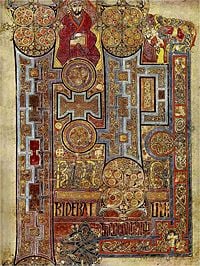
Christian settlements in Ireland were loosely linked, usually under the auspices of a great saint. By the late sixth century, numerous Irishmen devoted themselves to an austere existence as monks, hermits, and as missionaries to pagan tribes in Scotland, the north of England, and in west-central Europe. A comprehensive monastic system developed in Ireland, partly through the influenced by Celtic monasteries in Britain, through the sixth and seventh centuries.
The monasteries became notable centres of learning. Christianity brought Latin, Irish scribes produced manuscripts written in the Insular style, which spread to Anglo-Saxon England and to Irish monasteries on the European continent. Initial letters were illuminated. The most famous Irish manuscript is the Book of Kells, a copy of the four Gospels probably dating from the late eighth century, while the earliest surviving illuminated manuscript is the Book of Durrow, probably made 100 years earlier.
Viking raiders
The first recorded Viking raid in Irish history occurred in 795 when Vikings from Norway looted the island of Lambay, located off the Dublin coast. Early Viking raids were generally small in scale and quick. These early raids interrupted the golden age of Christian Irish culture starting the beginning of two hundred years of intermittent warfare, with waves of Viking raiders plundering monasteries and towns throughout Ireland. By the early 840s, the Vikings began to establish settlements along the Irish coasts and to spend the winter months there. Vikings founded settlements in Limerick, Waterford, Wexford, Cork, Arklow and most famously, Dublin. Written accounts from this time (early to mid 840s) show that the Vikings were moving further inland to attack (often using rivers such as the Shannon) and then retreating to their coastal headquarters.
In 852, the Vikings Ivar Beinlaus and Olaf the White landed in Dublin Bay and established a fortress, on which the city of Dublin (from the Irish Gaelic An Dubh Linn meaning "the black pool") now stands. Olaf was the son of a Norwegian king and made himself the king of Dublin. After several generations a group of mixed Irish and Norse ethnic background arose (the so-called Gall-Gaels, Gall then being the Irish word for "foreigners" — the Norse). The descendants of Ivar Beinlaus established a long dynasty based in Dublin, and from this base succeeded in briefly dominating large parts of central and eastern Ireland. The Vikings became traders and their towns became a new part of the life of the country. However, the Vikings never achieved total domination of Ireland, often fighting for and against various Irish kings, such as Flann Sinna, Cerball mac Dúnlainge and Niall Glúndub. Ultimately they were suborned by King Máel Sechnaill mac Domnaill of Meath at the battle of Tara in 980.
First king of Ireland
Two branches of Niall's descendants, the Cenél nEogain, of the northern Uí Néill, and the Clan Cholmáin, of the southern Uí Néill, alternated as kings of Ireland from 734 to 1002. Brian Boru (941 - 1014) became the first high king of all Ireland (árd rí Éireann) in 1002. King Brian Boru subsequently united most of the Irish Kings and Chieftains to defeat the Danish King of Dublin who led an army of Irish and Vikings at the Battle of Clontarfin 1014.
An unsettled period followed the Battle of Clontarf, in which high kings succeeding Brian Boru were unable to assert complete rule. The kings of Munster and Connaught, Leinster and Ulster allied with the ecclesiastical reform movement of western Europe as it extended into Ireland in the eleventh and twelfth centuries. A system of dioceses corresponding with the chief petty kingdoms was set up, with the archbishopric of Armagh at the head of this hierarchy, in association with the province of Ulster which was dominated by the royal family of Uí Néill.
The Anglo-Norman invasion
By the twelfth century, Ireland was divided politically into a shifting hierarchy of petty kingdoms and over-kingdoms. Power was exercised by the heads of a few regional dynasties vying against each other for supremacy over the whole island. One of these, the King of Leinster Diarmait Mac Murchada was forcibly exiled from his kingdom by the new High King, Ruaidri mac Tairrdelbach Ua Conchobair. Fleeing to Aquitaine, Diarmait obtained permission from Henry II to use the Norman forces to regain his kingdom. The first Norman knight landed in Ireland in 1167, followed by the main forces of Normans, Welsh and Flemings in Wexford in 1169. Within a short time Leinster was regained, Waterford and Dublin were under the control of Diarmait, who named his son-in-law, Richard de Clare, heir to his kingdom. This caused consternation to King Henry II of England, who feared the establishment of a rival Norman state in Ireland. Accordingly, he resolved to establish his authority.
With the authority of the papal bull Laudabiliter from Adrian IV, Henry landed with a large fleet at Waterford in 1171, becoming the first King of England to set foot on Irish soil. Henry awarded his Irish territories to his younger son John with the title Dominus Hiberniae ("Lord of Ireland"). When John unexpectedly succeeded his brother as King John, the "Lordship of Ireland" fell directly under the English Crown.
The Lordship of Ireland
Initially the Normans controlled the entire east coast, from Waterford up to eastern Ulster and penetrated as far west as Galway, Kerry and Mayo. The most powerful lords in the land were the great Hiberno-Norman Lord of Leinster from 1171, Earl of Meath from 1172, Earl of Ulster from 1205, Earl of Connaught from 1236, Earl of Kildare from 1316, the Earl of Ormonde from 1328 and the Earl of Desmond from 1329 who controlled vast territories, known as Liberties which functioned as self-administered jurisdictions with the Lordship of Ireland owing feudal fealty to the King in London. The first Lord of Ireland was King John, who visited Ireland in 1185 and 1210 and helped consolidate the Norman controlled areas, while at the same time ensuring that the many Irish kings swore fealty to him.
The Norman-Irish established the feudal system throughout most of lowland Ireland, characterised by baronies, manors, towns and large land-owning monastic communities, and the county system. King John established a civil government independent of the feudal lords. The country was divided into counties for administrative purposes, English law was introduced, and attempts were made to reduce the feudal liberties, which were lands held in the personal control of aristocratic families and the church. The Irish Parliament paralleled that of its English counterpart.
Throughout the thirteenth century the policy of the English Kings was to weaken the power of the Norman Lords in Ireland.
Gaelic resurgence
By 1261 the weakening of the Anglo-Normans had become manifest when Fineen Mac Carthy defeated a Norman army at the Battle of Callann, County Kerry, and killed John fitz Thomas, Lord of Desmond, his son Maurice fitz John and eight other Barons. In 1315, Edward Bruce of Scotland invaded Ireland, gaining the support of many Gaelic lords against the English. Although Bruce was eventually defeated at the Battle of Faughart, the war caused a great deal of destruction, especially around Dublin. In this chaotic situation, local Irish lords won back large amounts of land that their families had lost since the conquest and held them after the war was over.
The Black Death arrived in Ireland in 1348. Because most of the English and Norman inhabitants of Ireland lived in towns and villages, the plague hit them far harder than it did the native Irish, who lived in more dispersed rural settlements. After it had passed, Gaelic Irish language and customs came to dominate the country again. The English-controlled area shrunk back to the Pale, a fortified area around Dublin that ran through the counties of Louth, Meath, Kildare and Wicklow and the Earldoms of Kildare, Ormonde and Desmond.
Outside the Pale, the Hiberno-Norman lords adopted the Irish language and customs, becoming known as the Old English, and in the words of a contemporary English commentator, became "more Irish than the Irish themselves." Over the following centuries they sided with the indigenous Irish in political and military conflicts with England and generally stayed Catholic after the Reformation.
By the end of the fifteenth century, central English authority in Ireland had all but disappeared. England's attentions were diverted by its Wars of the Roses (civil war). The Lordship of Ireland lay in the hands of the powerful Fitzgerald Earl of Kildare, who dominated the country by means of military force and alliances with lords and clans around Ireland. Around the country, local Gaelic and Gaelicised lords expanded their powers at the expense of the English government in Dublin.
The Reformation
The Reformation, before which, in 1532, Henry VIII broke with Papal authority, fundamentally changed Ireland. While Henry VIII broke English Catholicism from Rome, his son Edward VI moved further, breaking with Papal doctrine completely. While the English, the Welsh and, later, the Scots accepted Protestantism, the Irish remained Catholic. This influenced their relationship with England for the next four hundred years, as the Reformation coincided with a determined effort on behalf of the English to re-conquer and colonise Ireland. This sectarian difference meant that the native Irish and the (Roman Catholic) Old English were excluded from political power.
Re-conquest and rebellion
From 1536, Henry VIII decided to re-conquer Ireland. The Fitzgerald dynasty of Kildare, who had become the effective rulers of Ireland in the fifteenth century, had invited Burgundian troops into Dublin to crown the Yorkist pretender, Lambert Simnel as King of England in 1497. Again in 1536, Silken Thomas Fitzgerald went into open rebellion against the crown. Having put down this rebellion, Henry VIII resolved to bring Ireland under English government control so the island would not become a base for future rebellions or foreign invasions of England.
In 1541, Henry upgraded Ireland from a lordship to a full Kingdom, and Henry was proclaimed King of Ireland at a meeting of the Irish Parliament attended by the Gaelic Irish chieftains as well as the Hiberno-Norman aristocracy. The re-conquest was completed during the reigns of Elizabeth and James I, after several bloody conflicts—the Desmond Rebellions (1569–1573 and 1579–1583 and the Nine Years War 1594–1603.
After this point, the English authorities in Dublin established real control over Ireland for the first time, bringing a centralised government to the entire island, and successfully disarmed the native lordships. However, the English were not successful in converting the Catholic Irish to the Protestant religion and the brutal methods used by crown authority to pacify the country heightened resentment of English rule.
From the mid-16th and into the early 17th century, crown governments carried out a policy of colonisation known as Plantations. Scottish and English Protestants were sent as colonists to the provinces of Munster, Ulster and the counties of Laois and Offaly. These settlers, who had a British and Protestant identity, would form the ruling class of future British administrations in Ireland. A series of Penal Laws discriminated against all faiths other than the established (Anglican) Church of Ireland. The principal victims of these laws were Catholics and later Presbyterians.
Civil wars and penal laws
The seventeenth century was perhaps the bloodiest in Ireland's history. Two periods of civil war (1641-53 and 1689-91) caused huge loss of life and resulted in the final dispossession of the Irish Catholic landowning class and their subordination under the Penal Laws.
Irish Catholics rebelled against English and Protestant domination in 1641, and killed thousands of Protestant settlers. The Catholic gentry briefly ruled the country as Confederate Ireland (1642-1649) against the background of the Wars of the Three Kingdoms until Oliver Cromwell re-conquered Ireland in 1649-1653 on behalf of the English Commonwealth. Cromwell's conquest was the most brutal phase of a brutal war. By its close, up to a third of Ireland's pre-war population was dead or in exile. As punishment for the rebellion of 1641, almost all lands owned by Irish Catholics were confiscated and given to British settlers. Several hundred remaining native landowners were transplanted to Connacht.
Ireland became the main battleground after the Glorious Revolution of 1688, when the Catholic James II left London and the English Parliament replaced him with William of Orange. The wealthier Irish Catholics backed James to try to reverse the remaining Penal Laws and land confiscations, whereas Protestants supported William to preserve their property in the country. James and William fought for the Kingdom of Ireland in the Williamite War, most famously at the Battle of the Boyne in 1690, where James's outnumbered forces were defeated. Jacobite resistance was finally ended after the Battle of Aughrim in July 1691. The Penal Laws that had been relaxed somewhat after the English Restoration were re-enacted more thoroughly after this war, as the Protestant elite wanted to ensure that the Irish Catholic landed classes would not be in a position to repeat their rebellions.
Colonial Ireland 1691-1801
Subsequent Irish antagonism towards England was aggravated by the economic situation of Ireland in the eighteenth century. Some absentee landlords managed some of their estates inefficiently, and food tended to be produced for export rather than for domestic consumption. Two very cold winters led directly to the Great Irish Famine (1740-1741), which killed about 400,000 people; all of Europe was affected. In addition, Irish exports were reduced by the Navigation Acts from the 1660s, which placed tariffs on Irish produce entering England, but exempted English goods from tariffs on entering Ireland. Some Irish Catholics remained attached to Jacobite ideology in opposition to the Protestant Ascendancy until the death of "James III & VII" in 1766. Thereafter, the Papacy recognised the Hanoverians as the legitimate rulers. Most of the eighteenth century was relatively peaceful in comparison with the preceding 200 years, and the population doubled to over four million.
By the late eighteenth century, many of the Irish Protestant elite had come to see Ireland as their native country. A Parliamentary faction led by Henry Grattan agitated for a more favourable trading relationship with England and for greater legislative independence for the Parliament of Ireland. However, reform in Ireland stalled over the more radical proposals to enfranchise Irish Catholics. This was enabled in 1793, but Catholics could not yet enter parliament or become government officials. Some were attracted to the more militant example of the French Revolution of 1789. They formed the Society of the United Irishmen to overthrow British rule and found a non-sectarian republic. Their activity culminated in the Irish Rebellion of 1798, which was bloodily suppressed.
Union with Great Britain
Largely in response to the 1798 rebellion, Irish self-government was abolished altogether by the Act of Union on January 1, 1801, which merged Kingdom of Ireland and the Kingdom of Great Britain (itself a union of England and Scotland, created almost 100 years earlier), to create the United Kingdom of Great Britain and Ireland. Part of the deal for the union was that Catholic Emancipation would be conceded to remove discrimination against Catholics, Presbyterians, and others. However, King George III controversially blocked any change. In 1823, an enterprising Catholic lawyer, Daniel O'Connell, known as "the Great Liberator" began a successful campaign to achieve emancipation, which was finally conceded in 1829. He later led an unsuccessful campaign for "Repeal of the Act of Union."
The second of Ireland's "great famines," An Gorta Mór struck the country severely in the period 1845-1849, with potato blight leading to mass starvation and emigration. The impact of emigration in Ireland was severe; the population dropped from over eight million before the Famine to 4.4 million in 1911. The Irish language, once the spoken language of the entire island, declined in use sharply in the nineteenth century as a result of the famine and the creation of the National School education system, as well as hostility to the language from leading Irish politicians of the time; it was largely replaced by English.
Outside mainstream nationalism, a series of violent rebellions by Irish republicans took place in 1803, under Robert Emmet; in 1848 a rebellion by the Young Irelanders, most prominent among them, Thomas Francis Meagher; and in 1867, another insurrection by the Irish Republican Brotherhood. All failed, but physical force nationalism remained an undercurrent in the nineteenth century.
The late nineteenth century also witnessed major land reform, spearheaded by the Land League under Michael Davitt demanding what became known as the 3 Fs; Fair rent, free sale, fixity of tenure. From 1870 various British governments introduced a series of Irish Land Acts - William O'Brien playing a leading role by winning the greatest piece of social legislation Ireland had yet seen, the Wyndham Land Purchase Act (1903) which broke up large estates and gradually gave rural landholders and tenants ownership of the lands. It effectively ended absentee landlordism, solving the age old Irish Land Question
In the 1870s the issue of Irish self-government again became a focus of debate under Protestant landowner, Charles Stewart Parnell and the Irish Parliamentary Party of which he was founder. British prime minister William Ewart Gladstone made two unsuccessful attempts to introduce Home Rule in 1886 and 1893. Parnell's controversial leadership eventually ended when he was implicated in a divorce scandal, when it was revealed that he had been living in family relationship with Katherine O'Shea, the long separated wife of a fellow Irish MP, with whom he was father of three children.
After the introduction of the Local Government (Ireland) Act 1898 which broke the power of the landlord dominated "Grand Juries," passing for the first time absolute democratic control of local affairs into the hands of the people through elected Local County Councils, the debate over full Home Rule led to tensions between Irish nationalists and Irish unionists (those who favoured maintenance of the union). Most of the island was predominantly nationalist, Catholic and agrarian. The northeast, however, was predominantly unionist, Protestant and industrialised. Unionists feared a loss of political power and economic wealth in a predominantly rural, nationalist, Catholic home-rule state. Nationalists believed that they would remain economically and politically second class citizens without self-government. Out of this division, two opposing sectarian movements evolved, the Protestant Orange Order and the Catholic Ancient Order of Hibernians.
Home Rule became certain when in 1910 the Irish Parliamentary Party (IPP) under John Redmond held the balance of power in the Commons and the third Home Rule Bill was introduced in 1912. Unionist resistance was immediate with the formation of the Ulster Volunteers. In turn the Irish Volunteers were established to oppose them and enforce the introduction of self-government.
World War I
In September 1914, just as the First World War broke out, the UK Parliament finally passed the Third Home Rule Act to establish self-government for Ireland, but was suspended for the duration of the war. Nationalist leaders and the IPP under Redmond in order to ensure the implementation of Home Rule after the war, supported the British and Allied war effort against the Central Powers. The core of the Irish Volunteers were against this decision, a majority splitting off into the National Volunteers who enlisted in Irish battalions of the 10th and 16th (Irish) Divisions. Before the war ended, Britain made two concerted efforts to implement Home Rule, one in May 1916 and again with the Irish Convention during 1917-1918, but the Irish sides (Nationalist, Unionist) were unable to agree terms for the temporary or permanent exclusion of Ulster from its provisions.
Easter 1916 uprising
A failed attempt was made to gain separate independence for Ireland with the 1916 Easter Rising, an insurrection in Dublin. Though support for the insurgents was small, the violence used in its suppression led to a swing in support of the rebels. In addition, the unprecedented threat of Irishmen being conscripted to the British Army in 1918 (for service on the Western Front as a result of the German Spring Offensive) accelerated this change. In the December 1918 elections most voters voted for Sinn Féin, the party of the rebels. Having won three-quarters of all the seats in Ireland, its MPs assembled in Dublin on January 21, 1919, to form a 32-county Irish Republic parliament, Dáil Éireann unilaterally, asserting sovereignty over the entire island.
Irish War of Independence
Unwilling to negotiate any understanding with Britain short of complete independence, the Irish Republican Army — the army of the newly declared Irish Republic — waged a guerilla war (the Irish War of Independence) from 1919 to 1921. In the course of the fighting and amid much acrimony, the Fourth Government of Ireland Act 1920 implemented Home Rule while separating the island into what the British government's Act termed "Northern Ireland" and "Southern Ireland."
In mid-1921, the Irish and British governments signed a truce that halted the war. In December 1921, representatives of both governments signed an Anglo-Irish Treaty. The Irish delegation was led by Arthur Griffith and Michael Collins. This abolished the Irish Republic and created the Irish Free State, a self-governing Dominion of the British Empire in the manner of Canada and Australia. Under the Treaty, Northern Ireland could opt out of the Free State and stay within the United Kingdom: it promptly did so. In 1922, both parliaments ratified the Treaty, formalising independence for the 26-county Irish Free State (which went on to become the Republic of Ireland in 1949); while the six county Northern Ireland, gaining Home Rule for itself, remained part of the United Kingdom. For most of the next 75 years, each territory was strongly aligned to either Catholic or Protestant ideologies, although this was more marked in the six counties of Northern Ireland.
Civil war
The treaty to sever the Union divided the republican movement into anti-Treaty (who wanted to fight on until an Irish Republic was achieved) and pro-Treaty supporters (who accepted the Free State as a first step towards full independence and unity). Between 1922 and 1923 both sides fought the bloody Irish Civil War. The new Irish Free State government defeated the anti-Treaty remnant of the Irish Republican Army. This division among nationalists still colours Irish politics today, specifically between the two leading Irish political parties, Fianna Fáil and Fine Gael.
Irish Free State
The new Irish Free State (1922–37) existed against the backdrop of the growth of dictatorships in mainland Europe and a major world economic downturn in 1929. In contrast with many contemporary European states it remained a democracy. Testament to this came when the losing faction in the Irish civil war, Eamon de Valera's Fianna Fáil, was able to take power peacefully by winning the 1932 general election. Nevertheless, up until the mid 1930s, considerable parts of Irish society saw the Free State through the prism of the civil war, as a repressive, British imposed state. It was only the peaceful change of government in 1932 that signalled the final acceptance of the Free State on their part. In contrast to many other states in the period, the Free State remained financially solvent as a result of low government expenditure. However, unemployment and emigration were high. The population declined to a low of 2.7 million recorded in the 1961 census.
The Roman Catholic Church had a powerful influence over the Irish state for much of its history. The clergy's influence meant that the Irish state had very conservative social policies, banning, for example, divorce, contraception, abortion, pornography as well as encouraging the censoring of many books and films. In addition the Church largely controlled the State's hospitals, schools and remained the largest provider of many other social services.
With the partition of Ireland in 1922, 92.6 percent of the Free State's population were Catholic while 7.4 percent were Protestant. By the 1960s, the Protestant population had fallen by half. Although emigration was high among all the population, due to a lack of economic opportunity, the rate of Protestant emigration was disproportionate in this period. Many Protestants left the country in the early 1920s. The Catholic Church had also issued a decree, known as Ne Temere, whereby the children of marriages between Catholics and Protestants had to be brought up as Catholics. From 1945, the emigration rate of Protestants fell and they became less likely to emigrate than Catholics - indicating their integration into the life of the Irish State.
World War II
In 1937, a new Constitution of Ireland proclaimed the state of Éire (or Ireland). The state remained neutral throughout World War II, a time termed The Emergency, and this saved it from much of the horrors of the war, although tens of thousands volunteered to serve in the British forces. Ireland was also hit badly by rationing of food, and coal in particular (peat production became a priority during this time). Though nominally neutral, recent studies have suggested a far greater level of involvement by the South with the Allies than was realised, with D Day's date set on the basis of secret weather information on Atlantic storms supplied by Éire.
Republic declared
In 1949 the state was formally declared the Republic of Ireland and it left the British Commonwealth. In the 1960s, Ireland underwent a major economic change under reforming Taoiseach (prime minister) Seán Lemass and Secretary of the Department of Finance T.K. Whitaker, who produced a series of economic plans. Free second-level education was introduced by Donnchadh O'Malley as Minister for Education in 1968. From the early 1960s, the Republic sought admission to the European Economic Community but, because 90 percent of the export economy still depended on the United Kingdom market, it could not do so until the UK did, in 1973.
Stagnation
Global economic problems in the 1970s, augmented by a set of misjudged economic policies followed by governments, including that of Taoiseach Jack Lynch, caused the Irish economy to stagnate. The Troubles in Northern Ireland discouraged foreign investment. Devaluation was enabled when the Irish Pound, or Punt, was established in as a truly separate currency in 1979, breaking the link with the UK's sterling.
The Troubles
The Troubles is a term used to describe the latest installment of periodic communal violence involving Republican and Loyalist paramilitary organisations, the Royal Ulster Constabulary (RUC), the British Army and others in Northern Ireland from the late 1960s until the Belfast Agreement of April 10, 1998. The Troubles consisted of about 30 years of repeated acts of intense violence between elements of Northern Ireland's nationalist community (principally Roman Catholic) and unionist community (principally Protestant). The conflict was caused by the disputed status of Northern Ireland within the United Kingdom and the domination of the minority nationalist community, and alleged discrimination against them, by the unionist majority. The violence was characterised by the armed campaigns of paramilitary groups. Most notable of these was the Provisional IRA campaign of 1969–1997 which was aimed at the end of British rule in Northern Ireland and the creation of a new, "all-Ireland," Irish Republic.
Celtic tiger unleashed
However, economic reforms in the late 1980s, the end of the Troubles, helped by investment from the European Community, led to the emergence of one of the world's highest economic growth rates, with mass immigration (particularly of people from Asia and Eastern Europe) as a feature of the late 1990s. This period came to be known as the Celtic Tiger and was focused on as a model for economic development in the former Eastern Bloc states, which entered the European Union in the early 2000s. Property values had risen by a factor of between four and ten between 1993 and 2006, in part fuelling the boom.
Irish society also adopted relatively liberal social policies during this period. Divorce was legalised, homosexuality decriminalised, while abortion in limited cases was allowed by the Irish Supreme Court in the X Case legal judgement. Major scandals in the Roman Catholic Church, both sexual and financial, coincided with a widespread decline in religious practice, with weekly attendance at Roman Catholic Mass halving in twenty years. A series of tribunals set up from the 1990s have investigated alleged malpractices by politicians, the Catholic clergy, judges, hospitals and the Gardaí (police).
xxxx
- Main article: History of Northern Ireland; for events before 1900 see Ulster or History of Ireland.
The area now known as Northern Ireland has had a diverse history. From serving as the bedrock of Irish resistance in the era of the plantations of Queen Elizabeth and James I in other parts of Ireland, it became the subject of major planting of Scottish and English settlers after the Flight of the Earls in 1607 (when the Gaelic aristocracy fled to Catholic Europe).
The all-island Kingdom of Ireland (1541—1800) merged into the United Kingdom of Great Britain and Ireland in 1801 under the terms of the Act of Union, under which the kingdoms of Ireland and Great Britain merged under a government and monarchy based in London. In the early 20th century, Unionists, led by Sir Edward Carson, opposed the introduction of Home Rule in Ireland. Unionists were in a minority on the island of Ireland as a whole, but were a majority in the northern province of Ulster, a very large majority in the counties of Antrim and Down, small majorities in the counties of Armagh and Londonderry (also known as Derry), with substantial numbers also concentrated in the nationalist-majority counties of Fermanagh and Tyrone. These six counties, containing an overall unionist majority, would later form Northern Ireland.
The clash between the House of Commons and House of Lords over the controversial budget of Chancellor of the Exchequer David Lloyd-George produced the Parliament Act 1911, which enabled the veto of the Lords to be overturned. Given that the Lords had been the unionists' main guarantee that a home rule act would not be enacted, because of the majority of pro-unionist peers in the House, the Parliament Act made Home Rule a likely prospect in Ireland. Opponents to Home Rule, from Conservative Party leaders like Andrew Bonar Law and Lord Randolph Churchill to militant unionists in Ireland, threatened the use of violence, producing the Larne Gun Running incident in 1912, when they smuggled thousands of rifles and rounds of ammunition from Imperial Germany for the Ulster Volunteer Force. Lord Randolph Churchill famously told a unionist audience in Ulster that "Ulster will fight, and Ulster will be right." Template:NIPMs
The prospect of civil war in Ireland was seen by some as likely.[citation needed] In 1914, the Third Home Rule Act, which contained provision for a temporary partition, received the Royal Assent. Its implementation was suspended for the duration of the intervening First World War, which was expected to last only a few weeks, but, in fact, lasted four years.
By the end of the war, the Act was seen as dead in the water, with public opinion in the majority nationalist community having moved from a demand for home rule to something more substantial: independence. Lloyd-George proposed in 1919 a new bill which would divide Ireland into two Home Rule areas, twenty-six counties being ruled from Dublin, six being ruled from Belfast, with a shared Lord Lieutenant of Ireland appointing both executives and a Council of Ireland, which Lloyd-George believed would evolve into an all-Ireland parliament.[citation needed]
Partition of Ireland, partition of Ulster
In United Kingdom law, Ireland was partitioned in 1921 under the terms of the Government of Ireland Act 1920. Six of the nine Ulster counties in the north-east formed Northern Ireland and the remaining three counties joined those of Leinster, Munster and Connacht to form Southern Ireland. Whilst the former came into being, the latter had only a momentary existence to ratify (in United Kingdom law) the Anglo-Irish Treaty that ended the Anglo-Irish War.
Under the Anglo-Irish Treaty, Northern Ireland was provisionally scheduled to be included in the Irish Free State, though it could opt out should the Parliament of Northern Ireland elect so to do.[1] As expected, it did so immediately. Once that happened, as provided for, an Irish Boundary Commission came into being, to decide on the territorial boundaries between the Irish Free State and Northern Ireland. Though leaders in Dublin expected a substantial reduction in the territory of Northern Ireland, with nationalist areas like south Armagh, Tyrone, southern Londonderry and urban territories like Derry and Newry moving to the Free State, the Boundary Commission decided against this. This decison was approved by the Dail in Dublin by a vote of 71 to 20.[2] The Council of Ireland provided for in the 1920 Act, and in the Treaty, to link Northern Ireland eventually to the Irish Free State within 50 years was removed.[3]
1925 to the present
In June 1940, to encourage the Irish state to join with the Allies, British Prime Minister Winston Churchill indicated to the Taoiseach Éamon de Valera that the United Kingdom would push for Irish unity, but believing that Churchill could not deliver, de Valera declined the offer.[4] The British did not inform the Northern Ireland government that they had made the offer to the Dublin government, and De Valera's rejection was not publicized until 1970.
The Ireland Act 1949 gave the first legal guarantee to the Parliament and Government that Northern Ireland would not cease to be part of the United Kingdom without consent of the majority of its citizens, and this was most recently reaffirmed by the Northern Ireland Act 1998. This status was echoed in the Anglo-Irish Agreement in 1985, which was signed by the governments of the United Kingdom and the Republic of Ireland. Bunreacht na hÉireann, the constitution of the Republic, was amended in 1999 to remove a claim of the "Irish nation" to sovereignty over the whole of Ireland (in Article 2), a claim qualified by an acknowledgement that the southern state only could exercise legal control over the territory formerly known as the Irish Free State. The new Articles 2 and 3, added to the Bunreacht to replace the earlier articles, implicitly acknowledge that the status of Northern Ireland, and its relationships within the United Kingdom and with the Republic of Ireland, would only be changed with the agreement of a majority of voters in Northern Ireland. An acknowledgement that a decision on whether to remain in the United Kingdom or join the Republic of Ireland rests with the people of Northern Ireland was also central to the Belfast Agreement, which was signed in 1998 and ratified by plebiscites held simultaneously in both Northern Ireland and the Republic. However, many unionist leaders equivocate when asked if they would peacefully accept a reunited Ireland if a majority in Northern Ireland sought it.[citation needed]
A plebiscite within Northern Ireland on whether it should remain in the United Kingdom, or join the Republic, was held in 1973. The vote went heavily in favour (98.9%) of maintaining the status quo with approximately 57.5% of the total electorate voting in support, but most nationalists boycotted the poll (see Northern Ireland referendum, 1973 for more). Though legal provision remains for holding another plebiscite, and former Ulster Unionist Party leader David Trimble some years ago advocated the holding of such a vote, no plans for such a vote have been adopted as of 2007.
8 May 2007 Home rule returned to Northern Ireland. DUP leader Ian Paisley and Sinn Féin's Martin McGuinness took office as First Minister and Deputy First Minister, respectively [5].
Lives lost and injured in the “Troubles”
Main article: The Troubles
Bombings in Great Britain tended to have had more publicity, since attacks there were comparatively rare (in the context of the troubles); indeed 93% of killings happened in Northern Ireland. Republican paramilitaries have contributed to nearly 60% (2056) of these. Loyalists have killed nearly 28% (1020) while the security forces have killed just over 11% (362) with 9% percent of those attributed to the British Army.
Civilians killed
Civilians account for the highest death toll at 53% or 1798 fatalities. Loyalist paramilitaries account for a higher proportion of civilian deaths (those with no military or paramilitary connection) according to figures published in Malcolm Sutton’s book, “Bear in Mind These Dead: An Index of Deaths from the Conflict in Ireland 1969 - 1993.” According to research undertaken by the CAIN organisation, based on Sutton's work, 85.6% (873) of Loyalist killings, 52.9% (190) by the security forces and 35.9% (738) of all killings by Republican paramilitaries took the lives of civilians between 1969 and 2001. The disparity of a relatively high civilian death toll yet low Republican percentage is explained by the fact that they also had a high combatants' death toll.
Combatants killed
Republican paramilitaries account for a higher proportion of combatants killed (those within paramilitaries or the military) Again from Malcolm Sutton's research, Republicans killed 1318 combatants, the security forces killed 192 and the Loyalists killed 147. Both Republicans and Loyalists killed more of their own than each other, over twice as many for Loyalists and nearly four times as many for Republicans.
80 people, mainly civilians, have died without any organisation claiming responsibility. The British Army has also lost 14 soldiers to Loyalists while the security forces overall in the Republic have lost 10 to Republicans.
According to a submission by Marie Smyth to the Northern Ireland Commission on Victims, 40,000 people have also been injured, though she believes that to be a conservative figure.
Government and politics
Structure
As an administrative division of the United Kingdom, Northern Ireland was defined by the Government of Ireland Act, 1920, and has had its own form of devolved government in a similar manner to Scotland and Wales. The new legislature controlled housing, education, and policing, but had little fiscal autonomy and became increasingly reliant upon subsidies from the British government. The legislature consisted of a Senate and a House of Commons.
After the partition of Ireland in 1922, Northern Ireland continued to send representatives to the British House of Commons, the number of which over the years increased to 18. Those 18 seats in 2007 comprised 10 unionist, five republican (abstentionist), and three nationalists. Northern Ireland also elects delegates to the European Parliament (the legislative branch of the European Union).
Escalating violence meant that in March 1972 the British government of Edward Heath suspended the Belfast parliament and governed the region directly, attempts to introduce either a power-sharing executive or a new assembly failed.
On April 10, 1998, the Belfast Agreement (also known as the Good Friday Agreement) was signed, and endorsed in referenda by about 95 percent of Irish voters and 70 percent of Northern Irish voters.
The 108-member Northern Ireland Assembly established in Belfast in 1998 has an executive of both unionists (Protestants who support continued British rule of Northern Ireland) and nationalists (Catholics who support a united Ireland). The legislature selects a first minister and a deputy first minister, both of whom need the support of a majority of unionist and nationalist legislators. Moreover, legislation can be passed in the assembly only if it has the support of a minimum proportion of both unionist and nationalist members.
Westminster retained control of taxation, policing, and criminal justice.
In 2002 devolved power was suspended, and Northern Ireland was ruled from London. However, in 2007, the hard-line Roman Catholic Sinn Féin and the Protestant Democratic Unionist Party (DUP) reached a historic settlement to form a power-sharing government, thereby allowing the return of devolved power to Northern Ireland.
The Northern Ireland Assembly has 108 Members of the Legislative Assembly (MLAs) (in 2007 55 unionists, 28 republicans, 16 nationalists, nine others), which had its powers restored on 8 May 2007. The three seats in the European Parliament (comprised two unionist, one republican)
At the local level in 2007 there were 26 district councils –with proposals to reduce the number of councils to seven
As the United Kingdom of Great Britain & Northern Ireland is a constitutional monarchy there is no election for Head of State.
Northern Ireland's legal and administrative systems were adopted from those in place in pre-partition United Kingdom, and was developed by its government from 1922 until 1972. Thereafter, laws, administration and foreign affairs relating to Northern Ireland have been handled directly from Westminster.
Northern Ireland's legal system descends from the pre-1920 Irish legal system (as does the legal system of the Republic of Ireland), and is therefore based on common law. It is separate from the jurisdictions of England and Wales or Scotland.
Counties
Northern Ireland consists of six counties: Antrim, Armagh, Down, Fermanagh, Londonderry, and Tyrone. These counties are no longer used for local government purposes; instead there are 26 districts of Northern Ireland which have different geographical extents, even in the case of those named after the counties from which they derive their name. Fermanagh District Council most closely follows the borders of the county from which it takes its name. Coleraine Borough Council, on the other hand, derives its name from the town of Coleraine in County Londonderry.
Economy
The Northern Ireland economy is the smallest of the four economies making up the United Kingdom. Northern Ireland has traditionally had an industrial economy, most notably in shipbuilding, rope manufacture and textiles, but most heavy industry has since been replaced by services, primarily the public sector. Tourism also plays a big role in the local economy. More recently the economy has benefited from major investment by many large multi-national corporations into high tech industry. These large organisations are attracted by government subsidies and the highly skilled workforce in Northern Ireland.
Fiscally a part of the United Kingdom, Northern Ireland's official currency is the British pound sterling. Government revenue shares the United Kingdom's customs and excise, income, value-added, and capital gains taxes, as well as property taxes. At the end of the twentieth century, subsidies from the British Treasury accounted for about two-fifths of Northern Ireland's GDP.
Throughout the 1990s, the Northern Irish economy grew faster than did the economy of the rest of the UK, due in part to the rapid growth of the economy of the Republic of Ireland and the so-called 'peace dividend'. Growth slowed to the pace of the rest of the UK during the down-turn of the early years of the new millennium, but growth has since rebounded.
During The Troubles, Northern Ireland received little foreign investment. Many believe this to be the result of Northern Ireland's portrayal as a warzone in the media, by both British and International during this period.
Since the signing of Good Friday Agreement investment in Northern Ireland has increased significantly. Most investment has been focused in Belfast and several areas of the Greater Belfast area.
Agriculture in Northern Ireland is heavily mechanised, thanks to high labour costs and heavy capital investment, both from private investors and the European Union's Common Agricultural Policy. In 2000, agriculture accounted for 2.4% of economic output in Northern Ireland, compared to 1% in the United Kingdom as a whole.
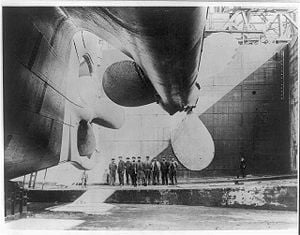
Heavy industry is concentrated in and around Belfast, although other major towns and cities also have heavy manfufacturing areas. Machinery and equipment manufacturing, food processing, and textile and electronics manufacturing are the leading industries. Other industries such as papermaking, furniture manufacturing, aerospace and shipbuilding are also important, concentrated mostly in the eastern parts of Northern Ireland. Of these different industries, one of the most notable is that of Northern Ireland's fine linens, which is considered as one of the most well-known around Europe.
Engineering is the largest manufacturing sub-sector in Northern Ireland, particularly in the fields of aerospace and heavy machinery. Bombardier Aerospace, which builds business jets, short-range airliners and fire-fighting amphibious aircraft and also provides defence-related services, is the province's largest industrial employer, with 5400 workers at five sites in the Greater Belfast area.
As with all developed economies, services account for the majority of employment and output. Services account for almost 70 percent of economic output, and 78 percent of employees.
Despite the negative image of Northern Ireland held in many foreign countries, on account of the Troubles, tourism is an important part of the Northern Irish economy. In 2004, tourism revenue rose 7 percent to £325m, or over 1 percent of the local economy, on the back of a rise of 4 percent in total visits to 2.1-million in the year. The most popular tourist attractions include Belfast, Armagh, the Giant's Causeway, and Northern Ireland's many castles.
The public sector accounts for 63 percent of the economy of Northern Ireland, which is substantially higher than 43 percent of the United Kingdom as a whole. In total, the British government subvention totals £5000m, or 20 percent of Northern Ireland's economic output.
Most of Northern Ireland's trade is with other parts of the United Kingdom, and the republic of Ireland, which is its leading export market, as well as Germany, France, and the United States. Principal exports are textiles, transport equipment, and electrical and optical equipment.
Northern Ireland has the smallest economy of any of the twelve NUTS 1 regions of the United Kingdom, at €37.3bn, or about two-thirds of the size of the next smallest, North East England. However, this is partly because Northern Ireland has the smallest population; at $19,603 Northern Ireland has a greater GDP per capita than both North East England and Wales. As a part of the UK, Northern Ireland lacks an international GDP per capita rating, but would fall between Kuwait (38th) and Hungary (39th).
Unemployment in Northern Ireland has decreased substantially in recent years, and was in 2006 4.5 percent, which is amongst the lowest of the regions of the United Kingdom, down from a peak of 17.2 percent in 1986.
Northern Ireland has well-developed transport infrastructure, with a total of 15,420 miles (24,820km) of roads, considerably more than in the United Kingdom as a whole (1 km per 162 people). There are seven motorways in Northern Ireland, extending radially from Belfast, and connecting that city to Antrim, Dungannon, Lisburn, Newtownabbey, and Portadown. The Northern Irish rail network is notable as being both the only part of the United Kingdom's railroads operated by a state-owned company, Northern Ireland Railways, and the only substantial part that carries no freight traffic.
Northern Ireland has three civilian airports: Belfast City, Belfast International, and City of Derry. Major seaports in Northern Ireland include the Port of Belfast and the Port of Larne. The Port of Belfast is one of the chief ports of the British Isles, handling 17 million tonnes (16.7 million long tons) of goods in 2005, equivalent to two-thirds of Northern Ireland's seaborne trade.
Demographics
Much of the population of Northern Ireland identifies by ethnicity, religion, and political bent with one of two different ideologies — unionism or nationalism. Ulster Unionists are generally Protestants, most of whom belong to the Presbyterian Church in Ireland or the Church of Ireland, whose ancestors came from England to colonize the country in the nineteenth century and earlier, and who supported William of Orange when he took the throne of England from the Catholic James II. The Nationalists are native Irish who were ruled by Irish chiefs, are Roman Catholics who want Northern Ireland to be reunited with the Republic of Ireland. Not all Catholics support Nationalism, and not all Protestants support Unionism. Polls point to a preference among Protestants to remain a part of the UK (85 percent), while Catholic preferences are spread across a number of solutions to the constitutional question including remaining a part of the UK (25 percent), a united Ireland (50 percent), Northern Ireland becoming an independent state (9 percent), and "don't know" (14 percent).
Population
The population of Northern Ireland was estimated as being 1,710,300 on 30 June 2004.
Ethnicity
- White: 1,670,988 (99.15%)
- Chinese: 4,145 (0.25%)
- Mixed: 3,319 (0.20%)
- Irish Traveller: 1,710 (0.10%)
- Indian: 1,567 (0.09%)
- Other Ethnic Group: 1,290 (0.08%)
- Pakistani: 666 (0.04%)
- Black African: 494 (0.03%)
- Other Black: 387 (0.02%)
- Black Caribbean: 255 (0.02%)
- Bangladeshi: 252 (0.01%)
- Other Asian: 194 (0.01%)
Citizenship and identity
People from Northern Ireland are British citizens on the same basis as people from any other part of the United Kingdom (e.g. by birth in the UK to at least one parent who is a UK permanent resident or citizen, or by naturalisation).
In addition to British citizenship, people who were born in Northern Ireland on or before 31 December 2004 (and most persons born after this date) are entitled to claim Irish citizenship. This is as a result of the Republic of Ireland extending Irish nationality law on an extra-territorial basis. Originally passed in 1956, the legislation was further developed in 2001 as a result of the Belfast Agreement of 1998, which stated that:
This was subsequently qualified by the Twenty-seventh Amendment]] of the Constitution of Ireland, which required citizenship claimants to have at least one parent who was (or was entitled to be) an Irish citizen. The subsequent legislation (Irish Nationality and Citizenship Act of 2004) came into effect on 1 January 2005 and brought Irish nationality law broadly into line with British nationality law.
Today, a constitutional right to Irish citizenship still exists for anyone who is both:
- Born on the island of Ireland (including its "isles and seas").
- Born to at least one parent who is, or is entitled to be, an Irish citizen.
In general, Protestants in Northern Ireland see themselves primarily as being British citizens, while Catholics regard themselves primarily as being Irish citizens.
Many of the population regard themselves as "Ulster" or "Northern Irish," either primarily, or as a secondary identity. In addition, many regard themselves as both British and Irish.
Not everyone in Northern Ireland regards themselves as being Irish, particularly not Protestants. A 1999 survey showed that 51% of Protestants felt "Not at all Irish" and 41% only "weakly Irish."
Religion
Most of the population of Northern Ireland are at least nominally Christian. In the 2001 census, 53.1 percent of the Northern Irish population were Protestant, (Presbyterian, Church of Ireland, Methodist and other Protestant denominations), 43.8 percent of the population were Roman Catholic, 0.4 percent Other and 2.7 none none.
Violent antagonism emerged between Catholics and Protestants. An influx of settlers from England and Scotland was not welcomed by the native Irish, since the newcomers were awarded the best parcels of land. At first, the minority Ulster Protestants could not dominate the Catholic majority, but after the victory of the Protestants supporting William of Orange at the Battle of the Boyne, they prevailed.
The proportion of the population practising their religious beliefs has fallen dramatically in the last decades of the twentieth century, particularly among Catholics and adherents of mainstream Protestant denominations. This has not necessarily resulted in a weakening of communal feeling.
Language
English is spoken as a first language by almost 100 percent of the Northern Irish population, though under the Good Friday Agreement, Irish and Ulster Scots (one of the dialects of the Scots language), sometimes known as Ullans, have recognition as "part of the cultural wealth of Northern Ireland".
Northern Ireland's political divisions are partly reflected through language. Irish is spoken by a small but significant and growing proportion of the population and is an important element of the cultural identity for many northern nationalists. Unionists tend to associated the use of Irish it with the largely Catholic Republic of Ireland, and more recently, with the republican movement. Catholic areas of Belfast have road signs in Irish, as they are in the Republic.
There are an increasing number of Ethnic Minorities in Northern Ireland. Chinese and Urdu are spoken by Northern Ireland's Asian communities; though the Chinese community is often referred to as the "third largest" community in Northern Ireland, it is tiny by international standards. Since the accession of new member states to the European Union in 2004, Central and Eastern European languages, particularly Polish, are becoming increasingly common.
Men and women
In 1937, the constitution required that a working woman who married had to resign from her job. The Employment Equality Act in 1977 made that practice illegal, resulting in a dramatic increase in women in the work force. More women entering the workforce between 1952 and 1995 as the number of jobs expanded. However, women tend to work in low-paid, part-time jobs in the service sector.
Marriage and the family
Families have tended to live in nuclear units in government housing projects in separate Catholic and Protestant areas — like the Falls Road (Catholic) and the Shankill (Protestant) areas in Belfast. Catholics tend to have larger families, making their homes more crowded. Nuclear families are the main kin group, with relatives involved as kin in the extended family. Children adopt the father's surname, and the first name is oftena Christian name.
Education
Education in Northern Ireland differs slightly from systems used elsewhere in the United Kingdom. Unlike most areas of the United Kingdom, in the last year of Primary school, children can sit the eleven plus transfer test, and the results determine whether they attend Grammar schools or Secondary schools. This system is due to be changed in 2008 amidst some controversy. Irish Gaelic medium and Integrated Education are increasing. Northern Ireland still has a highly religiously segregated education system.
See:
- List of Gaelic medium Primary schools in Northern Ireland
- List of Primary schools in Northern Ireland
- List of Grammar schools in Northern Ireland
- List of Secondary schools in Northern Ireland
- List of Integrated Schools in Northern Ireland
Class
Catholics were excluded from skilled and semiskilled jobs in shipyards and linen mills, were restricted to menial jobs, earning lower wages, and tended to be poorer than Protestants. Protestants worked in skilled jobs and management positions, dominated the professional and business classes, and tend to own most businesses and large farms.
Protestant and Catholic families lived in separate enclaves and worship separately, and their children study in segregated schools.
Irish Catholics tend to drink liquor, whereas Protestants are viewed as more puritanical. On Sundays, Catholics often engage in leisure or recreation activities after mass. They tend to be poorer, have larger families, speak Gaelic, although not fluently.
Protestants tend to belong to the Orange Order, which is dedicated to maintaining the Protestant religion and Protestant social superiority.
Unionist/Loyalist
- Ulster - this is used by some to suggest that the border of the province of Ulster, one of four provinces on the island of Ireland, was redrawn due to partition. The historic province of Ulster covers a greater landmass than Northern Ireland: six of its counties are in Northern Ireland, three in the Republic of Ireland.[6]
- The Province - to again link to the historic Irish province of Ulster, with its mythology. Also refers to the fact that NI is a province of the UK.[7]
Nationalist/Republican
- North of Ireland (Tuaisceart na hÉireann) - to link Northern Ireland to the rest of the island, by describing it as being in the 'north of Ireland' and so by implication playing down Northern Ireland's links with Great Britain. (The northernmost point in Ireland, in County Donegal, is in fact in the Republic.)[8]
- North-East Ireland - used in the same way as the "North of Ireland" is used.
- The Six Counties (na Sé Chontae) - language used by republicans e.g. Republican Sinn Féin, which avoids using the name given by the British-enacted Government of Ireland Act, 1920. (The Republic is similarly described as the Twenty-Six Counties.)[9] Some of the users of these terms contend that using the official name of the region would imply acceptance of the legitimacy of the Government of Ireland Act.
- The Occupied Six Counties. The Republic, whose legitimacy is not recognised by republicans opposed to the Belfast Agreement, is described as being "The Free State," referring to the Irish Free State, the Republic's old name.[10]
- British-Occupied Ireland. Similar in tone to the Occupied Six Counties this term is used by more dogmatic anti-Good Friday Agreement republicans who still hold that the First Dáil was the last legitimate government of Ireland and that all governments since have been foreign imposed usurpations of Irish national self-determination.[11]
- Fourth Green Field. From the song Four Green Fields by Tommy Makem which describes Ireland as divided with one of the four green fields (the traditional provinces of Ireland) being In strangers hands, referring to the partition of Ireland.
Other
- The North - used to describe Northern Ireland in the same way that "The South" is used to describe the Republic of Ireland.
- The Black North - a term sometimes used in different ways - either pejoratively or ironically, depending on one's political affiliation/sympathies. Often used by people from the Republic of Ireland.
- Norn Iron - is an informal and affectionate local nickname used by both nationalists and unionists to refer to Northern Ireland, derived from the pronunciation of the words "Northern Ireland" in an exaggerated Ulster accent (particularly one from the Greater Belfast area). The phrase is seen as a light-hearted way to refer to the province, based as it is on regional pronunciation. Often refers to the Northern Ireland national football team.
Use of language for geography
Notwithstanding the ancient realm of Dal Riata which extended into Scotland, disagreement on names, and the reading of political symbolism into the use or non-use of a word, also attaches itself to some urban centres. The most famous example is whether Northern Ireland's second city should be called "Derry" or "Londonderry".
Choice of language and nomenclature in Northern Ireland often reveals the cultural, ethnic and religious identity of the speaker. The first Deputy First Minister of Northern Ireland, Seamus Mallon, was criticised by unionist politicians for calling the region the "North of Ireland" while Sinn Féin has been criticised in some newspapers in the Republic for still referring to the "Six Counties".[12]
Those who do not belong to any group but lean towards one side often tend to use the language of that group. Supporters of unionism in the British media (notably the Daily Telegraph and the Daily Express) regularly call Northern Ireland "Ulster".[13] Some nationalist and republican-leaning media outlets in Ireland (such as Daily Ireland) almost always use "North of Ireland" or the "Six Counties".[14]
Government and cultural organizations in Northern Ireland, particularly those pre-dating the 1980s, often use the word "Ulster" in their title; for example, the University of Ulster, the Ulster Museum the Ulster Orchestra, and BBC Radio Ulster.
Many news bulletins since the 1990s have opted to avoid all contentious terms and use the official name, Northern Ireland. The North is still used by some news bulletins in the Republic of Ireland, to the annoyance of some Unionists. For Northern Ireland's second largest city, broadcasting outlets which are unaligned to either community and broadcast to both use both names interchangeably, often starting a report with "Londonderry" and then using "Derry" in the rest of the report. However, within Northern Ireland, print media which are aligned to either community (the News Letter is aligned to the unionist community while the Irish News is aligned to the nationalist community) generally use their community's preferred term. British newspapers with unionist leanings, such as the Daily Telegraph, usually use the language of the unionist community,[15] while others, such as The Guardian use the terms interchangeably.[16] The media in the Republic of Ireland use the names preferred by nationalists.[17] Whether this is an official editorial policy or a personal preference by the writers is unknown.
The division in nomenclature is seen particularly in sports and religions associated with one of the communities. Gaelic games use Derry, for example. Nor is there clear agreement on how to decide on a name. When the nationalist-controlled local council voted to re-name the city "Derry" unionists objected, stating that as it owed its city status to a Royal Charter, only a charter issued by the Queen could change the name. The Queen has not intervened on the matter and thus the council is now called "Derry City Council" while the city is still officially "Londonderry." Nevertheless, the council has printed two sets of stationery - one for each term - and their policy is to reply to correspondence using whichever term the original sender used.
At times of high communal tension, each side regularly complains of the use of the nomenclature associated with the other community by a third party such as a media organisation, claiming such usage indicates evident "bias" against their community.
Culture
With its improved international reputation, Northern Ireland has recently witnessed rising numbers of tourists who come to appreciate the area's unique heritage. Attractions include cultural festivals, musical and artistic traditions, countryside and geographical sites of interest, pubs, welcoming hospitality and sports (especially golf and fishing). Since 1987 pubs have been allowed to open on Sundays, despite some limited vocal opposition.
Architecture
Art
- Bogside Artists
- Basil Blackshaw, born in Glengormley, Painter
- Max Clendinning, post-modernist architect and interior designer
- John T. Davis, Documentary filmmaker
- Willie Doherty, Photographer & video artist twice nominated for the Turner Prize
- John Duncan, Photographer & editor of Source Magazine
- Garth Ennis, born in Holywood Co. Down, is creator of popular Vertigo series Preacher
- Terry George, born in Co. Down, director of Hotel Rwanda
- John Kindness, Painter and Sculptor
- Sir John Lavery, born in Belfast, was a representative of the group known as the Irish Impressionists.
- Eilís O'Connell, Sculptor, born in Derry, County Londonderry.
- Peter Richards, Photographer & video artist.
- Neil Shawcross, painter
- Paul Seawright, Photographer & Professor at the University of Ulster
- Victor Sloan, Photographer
- Hans Sloane, Born in Killyleagh, Co. Down, in 1660, his famous collection was opened to the public as the British Museum in 1759
- John Butler Yeats, Painter
Cuisine
The best known traditional dish in Northern Ireland is the Ulster fry. It is similar to an Irish or Full English breakfast, but with the unique addition of soda farls and potato bread.
Porridge or oatmeal often is eaten at breakfast, one stops for a cup of tea or coffee with cookies at midmorning. Most people eat the main meal at midday, which is meat-based, featuring beef, chicken, pork, or lamb. Fish and chips provide a quick meal, and a rich soup with plenty of bread can be bought in taverns at lunchtime. Irish stew combines mutton, potatoes, and onions, the chief elements of the cuisine.
Brown bread and white soda bread served most often with meals. In the evening, families eat a simple meal of leftovers or eggs and toast.
A drink generally means beer, either lager or stout. Guinness, brewed in Dublin, is the black beer most often drunk. Whiskey also is served in pubs, and coffee is also available.
Clothing
Literature
The Ulster Cycle is a large body of prose and verse centering around the traditional heroes of the Ulaid in what is now eastern Ulster. This is one of the four major cycles of Irish Mythology. The cycle centres around the reign of Conchobar mac Nessa, who is said to have been king of Ulster around the time of Christ. He ruled from Emain Macha (now Navan Fort near Armagh), and had a fierce rivalry with queen Medb and king Ailill of Connacht and their ally, Fergus mac Róich, former king of Ulster. The foremost hero of the cycle is Conchobar's nephew Cúchulainn.
Despite its small geographical size, Northern Ireland prolifically produces internationally renowned writers and poets from a wide variety of disciplines. Irish language literature was the predominant literature in the pre-Plantation period. The Ulster Cycle is pertinent to the history of literature in the territory of present-day Northern Ireland. Ulster-Scots literature first followed models from Scotland, with the rhyming weavers, such as James Orr, developing an indigenous tradition of vernacular literature. Writers in Northern Ireland participated in the Gaelic Revival.
- Ciarán Carson
- Mairtín Crawford
- Ian McDonald
- Brian Friel
- Seamus Heaney
- John Hewitt
- C. S. Lewis
- Louis MacNeice
- Medbh McGuckian
- Gerard McKeown
- Paul Muldoon
- Flann O'Brien
- Frank Ormsby
- Tom Paulin
- Richard Rowley
- Bob Shaw
Music
Mythology
Performing arts
- Kenneth Branagh
- Brian Friel
- Ciarán Hinds
- Mickey Marley
- Siobhán McKenna
- Liam Neeson
- James Nesbitt
- Stephen Rea
Music
Among traditional songs are The Sash and A Londonderry Air also known as Danny Boy.
- The Town I Loved So Well
- Angela Feeney
- Ash
- Brian Kennedy
- Derek Bell
- Duke Special
- Gary Moore
- James Galway
- Neil Hannon
- Ruby Murray
- Snow Patrol
- Stiff Little Fingers
- The Undertones
- Therapy?
- Ulster Orchestra
- Van Morrison
Sport
Some team sports are played on an all-Ireland basis, while in others Northern Ireland fields its own team. See Sport in Ireland
- Belfast Giants
- Gaelic football
- Milk Cup International youth football competition held in Northern Ireland
- Northern Ireland national football team
- Royal Portrush Golf Club
- Ulster Rugby
Internationally well-known sports people:
- George Best
- Darren Clarke
- Joey Dunlop
- Dave Finlay
- Alex Higgins
- David Humphreys
- Eddie Irvine
- Dave McAuley
- Willie John McBride
- Tony McCoy
- Wayne McCullough
- Mary Peters
- Ronan Rafferty
- Dennis Taylor
- Norman Whiteside
Symbols
Today, Northern Ireland comprises a diverse patchwork of communities, whose national loyalties are represented in some areas by flags flown from lamp posts. The Union Flag and former governmental Flag of Northern Ireland therefore appear in some loyalist areas, with the Irish national flag of the Republic of Ireland, the tricolour, appearing in some republican areas. Even kerbstones in some areas are painted red-white-blue or green-white-orange, depending on whether local people express unionist/loyalist or nationalist/republican sympathies.
The only official flag is the Union Flag.[18] The former Northern Ireland Flag (also known as the 'Ulster Banner' or 'Red Hand Flag') was based on the arms of the former Parliament of Northern Ireland, and was used by the Government of Northern Ireland and its agencies between 1953 and 1972. The Ulster Banner has not been used by the government since the abolition of the Parliament of Northern Ireland under the Northern Ireland Constitution Act 1973. It remains, however used uniquely to represent Northern Ireland in certain sporting events. The arms from which the Ulster Banner derives were themselves based on the flag of Ulster.
The Union Flag and the Ulster Banner are typically only used by Unionists.[19] Nationalists generally eschew symbols which uniquely represent Northern Ireland; some instead use the Irish Tricolour, particularly at sporting events. Many people, however, prefer to avoid flags altogether because of their divisive nature. Paramilitary groups on both sides have also developed their own flags. Some unionists also occasionally use the flags of secular and religious organisations to which they belong.
Some groups, including the Irish Rugby Football Union and the Church of Ireland have used the Flag of St. Patrick as a symbol of Ireland which lacks nationalist or unionist connotations. However, it is felt by some to be a loyalist flag, as it was used to represent Ireland when the whole island was part of the UK and is used by some British army regiments. Foreign flags are also found, such as the Palestinian flags in some Nationalist areas and Israeli flags in some Unionist areas, which represent general comparisons made by both sides with conflicts in the wider world.
The national anthem played at state events in Northern Ireland is "God Save the Queen." At some cross-community events, however, the "Londonderry Air," also known as the tune of "Danny Boy," may be played as a neutral, though unofficial, substitute. At some sporting events, such as GAA matches the Irish national anthem Amhran na bhFiann is played.
At the Commonwealth Games, the Northern Ireland team uses the Ulster Banner as its flag and Danny Boy is used as its National Anthem. The Northern Ireland football team also uses the Ulster Banner as its flag.[20]
Northern Irish murals have become well-known features of Northern Ireland, depicting past and present divisions. Almost 2,000 murals have been documented in Northern Ireland since the 1970s.
See also
| Northern Ireland Portal |
|
|
|
Lists
- List of Ireland-related topics
- List of Northern Irish people
- List of topics related to Northern Ireland
- List of United Kingdom-related topics
Footnotes
- ↑ Anglo-Irish Treaty, sections 11, 12
- ↑ http://historical-debates.oireachtas.ie/D/0013/D.0013.192512100009.html
- ↑ Anglo-Irish Treaty. Section 13.
- ↑ "Anglo-Irish Relations, 1939—41: A Study in Multilateral Diplomacy and Military Restraint" in Twentieth Century British History (Oxford Journals, 2005). ISSN 1477-4674.
- ↑ (BBC)
- ↑ Examples of usage of this term include Radio Ulster, Ulster Orchestra and RUC; political parties like the Ulster Unionist Party; paramilitary organisations like Ulster Defence Association and Ulster Volunteer Force. Ulster was also used political campaigns such as "Ulster Says No" and Save Ulster from Sodomy.
- ↑ DUP Press Release "PAISLEY REACTS TO PRIME MINISTER’S STATEMENT". Date unknown. Extract "The DUP will be to the fore in representing the vast majority of unionists in the Province."—example of Ian Paisley referring to Northern Ireland as The Province. Retrieved from Google cache on October 11, 2006.
- ↑ Example of "North of Ireland"
- ↑ Sinn Féin usage of "Six Counties"
- ↑ Examples of usage by the United States-based extreme republican "Irish Freedom Committee"
- ↑ Usage on "Gaelmail.com," a republican website
- ↑ Sunday Independent article on Mallon and the use of "Six Counties".
- ↑ Example of Daily Telegraph use of "Ulster" in text of an article, having used "Northern Ireland" in the opening paragraph.
- ↑ Daily Ireland usage of "The North" and the "Six Counties".
- ↑ Daily Telegraph usage
- ↑ The Guardian example
- ↑ RTÉ News usage
- ↑ [1]
- ↑ Northern Irish flags from the World Flag Database
- ↑ http://www.fifa.com/en/organisation/confederations/associationdetails/0,1483,NIR,00.html?countrycode=NIR
Further reading
- Jonathan Bardon, A History of Ulster (Blackstaff Press, Belfast, 1992), ISBN 0-85640-476-4
- Brian E. Barton, The Government of Northern Ireland, 1920—1923 (Athol Books, 1980).
- Paul Bew, Peter Gibbon and Henry Patterson The State in Northern Ireland, 1921—72: Political Forces and Social Classes, Manchester (Manchester University Press, 1979)
- Tony Geraghty (2000). The Irish War. Johns Hopkins University Press. ISBN 0-8018-7117-4.
- Robert Kee, The Green Flag: A History of Irish Nationalism (Penguin, 1972–2000), ISBN 0-14-029165-2
- Osborne Morton, 1994. Marine Algae of Northern Ireland Ulster Museum, Belfast.
External links
- Northern Ireland Countries and Their Cultures No-Sa, accessed September 12, 2007.
General
- BBC Northern Ireland News The Northern Ireland news from BBC News Online
- Online NI Local Government Portal
- ni-photos.jmcwd.com Photos From Around Northern Ireland
- NICVA Northern Ireland Council for Voluntary Action
- Community NI Community NI: Northern Ireland voluntary and community sector.
Geography
- Geography in Action The geology of Northern Ireland
History
- Northern Ireland Elections
- BBC Nations History of Ireland on bbc.co.uk
- Conflict Archive on the Internet from the University of Ulster
 PDF by Prof. Philip Payton
PDF by Prof. Philip Payton- From Partition to Direct Rule: 50 Years of Northern Ireland Parliamentary Papers Online
Tourism
- Discover Northern Ireland Northern Ireland Tourist Board
- Outdoor Activities NI Directory of outdoor activities and activity providers in Northern Ireland. Provided by the Countryside Access & Activities Network and The Northern Ireland Tourist Board
- Walk NI The definitive guide to walking in Northern Ireland from the Countryside Access & Activities Network and The Northern Ireland Tourist Board
- Northern Ireland Tourist Guide What has Northern Ireland got to offer tourists?
- The Northern Ireland Guide - a travel guide to Northern Ireland for tourists and residents alike
- Armagh Down Tourism
- Go To Belfast
- Fermanagh Lakelands
- Mourne Mountains
- culturenorthernireland.org
Credits
New World Encyclopedia writers and editors rewrote and completed the Wikipedia article in accordance with New World Encyclopedia standards. This article abides by terms of the Creative Commons CC-by-sa 3.0 License (CC-by-sa), which may be used and disseminated with proper attribution. Credit is due under the terms of this license that can reference both the New World Encyclopedia contributors and the selfless volunteer contributors of the Wikimedia Foundation. To cite this article click here for a list of acceptable citing formats.The history of earlier contributions by wikipedians is accessible to researchers here:
- Northern_Ireland history
- Demography_and_politics_of_Northern_Ireland history
- County_Antrim history
- Economy_of_Northern_Ireland history
- Culture_of_Northern_Ireland history
The history of this article since it was imported to New World Encyclopedia:
Note: Some restrictions may apply to use of individual images which are separately licensed.
